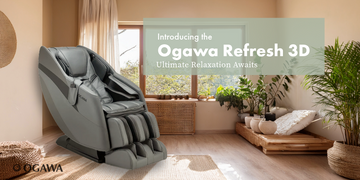Flexibility is so much more than just being able to bend over and touch your toes or hit that high kick you’ve been practicing. Finding ways to improve flexibility also has positive effects on your health. Whether you’re at the gym looking to make gains or you’re just trying to increase your own mobility, learning how to improve flexibility is both important and very doable.
Today we’re taking a look at how to improve flexibility at home. You’ll see that there are many activities you can do aside from just exercises to improve flexibility. Off we go!
Importance of Knowing How to Improve Flexibility
When you think about learning how to improve flexibility you might think it’s just for preventing or recovering from a sports injury, healing after you’ve pulled a muscle, or moving more fluidly. While those are all great benefits of knowing how to improve flexibility, it doesn’t stop there. Finding ways to improve flexibility helps strengthen your core, increase mobility, practice good posture, and have better muscle coordination.
Flexibility can affect your everyday life, as well. If you’re less mobile, for example, your body may start to seize up or become more stiff due to the inability to move as well. This stiffness negatively impacts range of motion, leaving your flexibility diminished. This reduced range of motion could lead to a higher risk of injury.
Ways to Improve Flexibility at Home
Now that we’ve gotten a better understanding of why it’s important to learn how to improve flexibility, let’s hop into some easy methods you can do at home. While important, it’s more than just stretches and doing exercises to improve flexibility that work. Those lifts you’re doing? They’re contributing to your flexibility. Getting a massage for health and wellness? That’s helping improve flexibility in your muscles, too.
A few easy activities to do and adjustments you can make when learning how to improve flexibility at home include:
- Dynamic stretches before working out or other physical activities
- Post workout recovery routines to stay loose after cooling down
- Exercises to improve range of motion
- Massage to stay loose and improve flexibility
- Stress management techniques
- Staying hydrated for flexibility
Pre-Workout Stretches to Improve Flexibility
Without a doubt, one of the easiest methods for how to improve flexibility at home is to do dynamic stretches before physical activity. The methods of holding stretch positions for long periods of time are largely things of the past and today experts have recognized the benefits of dynamic stretching over static stretches for warming up.
While these dynamic stretches are especially important before doing things like working out, going for a run, or playing sports, you can also make them part of a morning routine that gets you ready to take on the day ahead.
Examples of dynamic stretches to improve flexibility include lunges, squats, jumping jacks, and push-ups. You should ideally do multiple sets of each body movement and be in a light sweat before beginning your physical activity.
Post Workout Recovery Routines to Improve Flexibility and Maintain It
Warming up isn’t the end of the need to stretch. While your pre-workout warmup is focused on dynamic stretching, post workout recovery routines can adopt more static stretch techniques to help lengthen muscles that have tightened during your activity. Stretching as part of a post-workout cooldown is great for things like tennis recovery, avoiding lower back pain after golf, or other potential necessities after participating in sports.
Getting a Massage to Improve Flexibility
You may have firsthand experience with how full body massages reduce stress and provide deep relaxation. Did you know that massage can also be beneficial for how to improve flexibility, too? If getting a regular massage therapist appointment doesn’t fit your busy schedule, one of the many benefits of owning a massage chair is that you can use it as part of your routine for how to improve flexibility at home. The evolution of luxury massage chairs has effectively eliminated any difference between using a massage chair vs human massage.
What does this mean for your ability to improve flexibility? While stretching may get you loose and limber for the activities ahead, the potential health benefits of massage chairs make them ideal for keeping you loosened up all the time! In today’s high tech models, you can choose from a variety of different types of massage programs such as Thai massage, Swedish massage, shiatsu massage, and even AI massage technology (yep, it’s a thing).
Other massage chair features like chromotherapy and heat therapy benefits may also help enhance your experience and improve flexibility from the comfort of home. Regular use of these chairs could help boost energy levels, keeping you ready to take on anything your days throw at you!
How to Improve Flexibility Using Stress Management Techniques
Have you ever been a bundle of nerves or felt stressed out and suddenly your body is in knots and you’re sore? When we experience stress, oftentimes our bodies subconsciously tense up, seizing different muscle groups and causing muscle tension that can be uncomfortable or painful. Whether it’s work related stress, family stress, or various stress factors that have built up in our everyday experiences, practicing stress management techniques may help with how to improve flexibility at home.
One of the simplest and most common ways to improve flexibility with stress relief techniques is to practice meditation. Studies have shown a correlation between meditation, stress relief, and overall well being. You don’t have to spend a long time each day meditating, but a few minutes can work wonders. As there are many different types of meditation, finding one that fits your needs and works for you is just a matter of trying different things out and seeing which resonates best.
If you’re using a massage chair at home, you’ve got another tool that can help with stress management right there. Massage may be an effective method for how to lower cortisol levels naturally and alleviate symptoms of stress. Alongside stress reduction, the potential benefits of massage for anxiety may help with how to fight depression naturally, as well.
The Correlation Between Hydration and Flexibility
Water makes up a large part of our bodies, especially muscle composition. It stands to reason, then, that without proper hydration our muscles cannot function properly. Similar to oil in an engine, our muscles require hydration to move as easily and without added stress or friction. This means that even something as simple as drinking more water is able to benefit you when learning how to improve flexibility at home!
As you have seen, there are several different habits, adjustments, and self care treatments you can adopt for how to improve flexibility at home. It’s not just about doing endless stretches or exercises but considering all the ways your body can help move more freely and effectively. Learning how to improve flexibility may help prevent injury or enhance how the body heals itself if an injury occurs. So practice dynamic stretching, start a post workout recovery routine, choose a massage chair for keeping your body loose at home, and make sure you’re drinking plenty of water. You’ll feel great and be ready for each and every day.
For more information on the evolution of massage chairs and how they could enhance your lifestyle, check out these resources:





